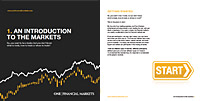

Chinese Yuan Flat After Reserve Ratio Cut, Australian Rate Hike in Focus
By Ambar Warrick
Investing.com-- China’s yuan curbed recent losses on Tuesday after the People's Bank attempted to boost liquidity in the country, while the Australian dollar rose slightly ahead of a broadly expected interest rate hike by the country.
The yuan traded flat around two-year lows of 6.9315, after falling substantially in recent sessions. The currency has been hit particularly hard by slowing economic growth in China, as well as broad strength in the U.S. dollar.
The People’s Bank of China (PBOC) said on Monday that it will cut the amount of foreign exchange reserves needed to be held by financial institutions - a move that is likely aimed at supporting the yuan.
The move is expected to increase dollar liquidity in China and increase trading in the yuan, which the government believes will support the currency.
China also flagged increased stimulus measures in the third quarter, as it struggles to shore up economic growth amid crippling COVID-19 lockdowns. The PBOC has trimmed interest rates several times this year, which has weighed on the yuan.
The Australian dollar rose 0.4% to 0.6822 to the greenback, ahead of a widely expected interest rate hike by the central bank.
The Reserve Bank of Australia (RBA) is expected to hike rates by 50 basis points to 2.35%, as it looks to curb runaway inflation in the country. The RBA has raised rates four times so far this year, as inflation reached a 30-year high.
Other Asian currencies rose slightly, recovering from recent losses as the dollar index fell slightly from a 20-year peak. Dollar index futures were also muted.
The greenback strengthened sharply this year after the Federal Reserve began hiking interest rates at a fast clip to control inflation. Traders are now expecting a 60% chance of a 75 basis point hike by the central bank later this month.
The Japanese yen traded sideways after data showed household spending grew less than expected in July, indicating pressure on consumers from rising inflation. Worsening the situation, Japanese wages grew at a slower pace in July than June.
In Southeast Asia, the Philippine peso rose slightly after inflation came in higher-than-expected for August. The reading puts more pressure on the central bank to raise interest rates.
Begin trading today! Create an account by completing our form
Privacy Notice
At One Financial Markets we are committed to safeguarding your privacy.
Please see our Privacy Policy for details about what information is collected from you and why it is collected. We do not sell your information or use it other than as described in the Policy.
Please note that it is in our legitimate business interest to send you certain marketing emails from time to time. However, if you would prefer not to receive these you can opt-out by ticking the box below.
Alternatively, you can use the unsubscribe link at the bottom of the Demo account confirmation email or any subsequent emails we send.
By completing the form and downloading the platform you agree with the use of your personal information as detailed in the Policy.






